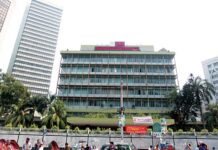Composition of the Eid economy shifts marginally over time.
The food sector is far believed to be the biggest gainer, chased by clothing, while all other products and services together make up small portion of the seasonal surge in sales.
Within the food sector, the sweet traders probably gained the most. Every year, businesses in this food sub-sector make special arrangements to match the hike in demand.
During the current Ramadan, sales have multiplied many times over average monthly volume, though verifiable data was not made available to support the claim.
“The business of brands like Bonaful, Rajdhani, Bonalata, Muslim Sweet and Bikrampur shops was brisk all through Ramadan. The demand came from not only families but corporate clients throwing Iftar parties,” said Rubyet Hasan, head of sales of a sweet shop in Mirpur Area.
He said: “we received an order for 80 kgs of sweets from a corporate client for arranging Iftar party.”
General manager of another sweet shop in Uttara area Arman Sheikh said sales usually get pace every festival but in the run up to the Eid-ul-Fitr, sales beat other festival time sales. “My sale has multiplied many times this season,” he said.
The sale of fruits, beverages and other edibles also increase significantly during the month. All companies and individuals associated with the sector got a boost. The textile sector follows close on the heels of the food sector in terms of volume and margins.
Visiting different markets from makeshift shops to the shopping mall in the city, traders confirm in the closing weeks of Ramadan from across the country confirmed increased sales of garments.
“The business houses were expecting higher sales in the final days of Ramadan,” said Mamun, a salesman at a Zhumak shop at the Jamuna Future Park.
He said customers are buying but some are roaming without buying. He sold garments worth Tk1,00,000 in first four hours of the day till 2pm yesterday, which is much higher than any other days.
Arman Hossain at a makeshift shop said sales has doubled today, what I have seen in the first 10 Ramadan.
Anisur Rhman, a private service holder, comes to buy for his children but not for him because of limited budget. “In Eid, first delicious food then cloth is my preference,” he said, when asked.
Benefits of a booming Eid economy flow beyond borders. The availability of Indian jewellery and cloths, as well as Chinese footwear, suggests that the manufacturing sector of neighbouring economies also cut a portion of the market pie.
“There is no denying the fact that economic activity gets a boost in Ramadan, when even cautious spenders lower their guard and indulge in a shopping binge,” said an analyst.
He said: “A majority of buyers enter the market to make most out of their limited budgets.”
The trend of online shopping among the young population is picking up slowly because of the limited choices available on the online marketplace.
“It will take some more time for the trend to make its mark in Bangladesh. To some extent, it also depends on the companies to start online sales,” said an analyst.
“I would have preferred to order online instead of venturing outside when the road is packed with jam. For everything except for my pizzas and burgers, I have to venture out,” said Badhon, a teenager.
Source: Dhaka Tribune










